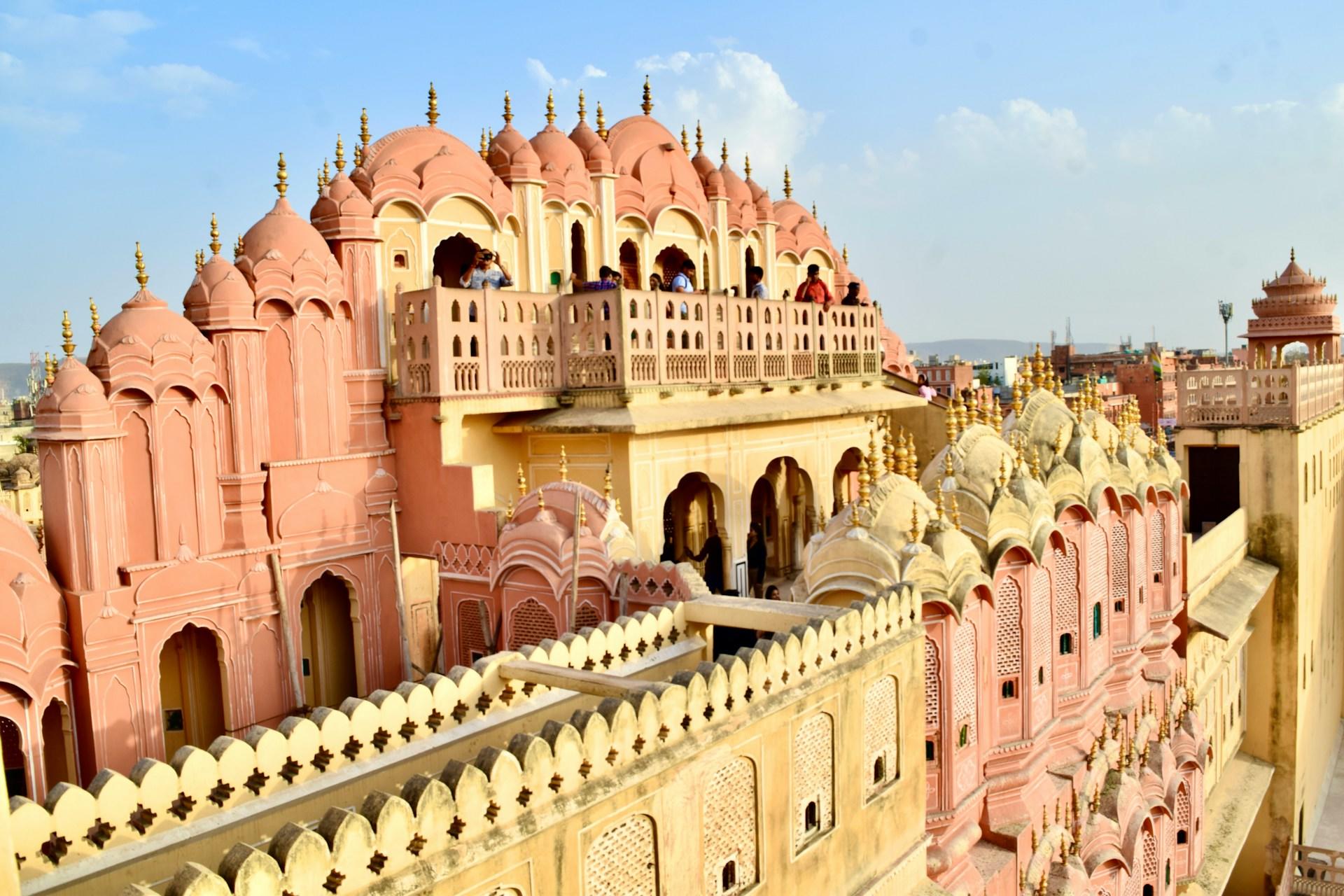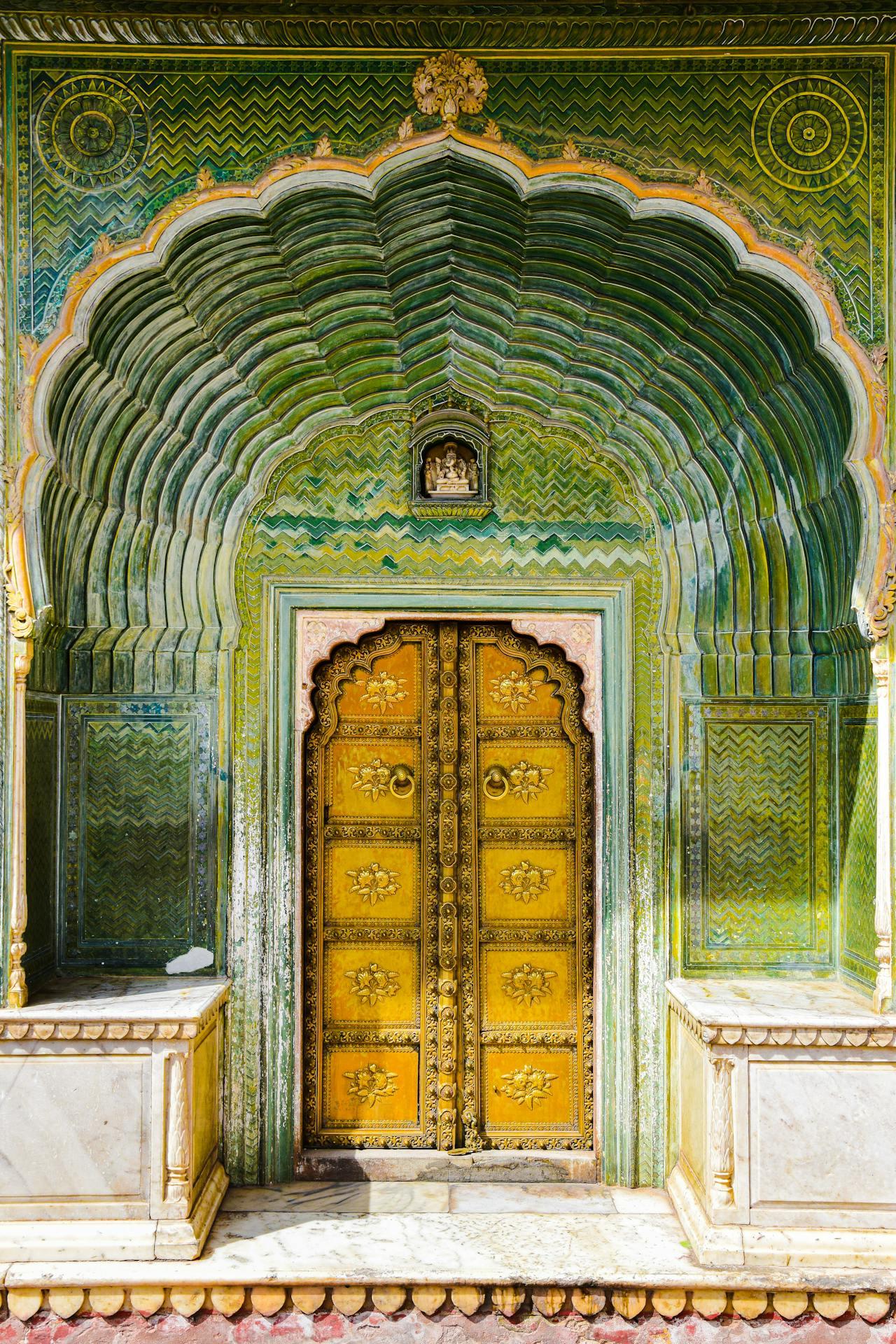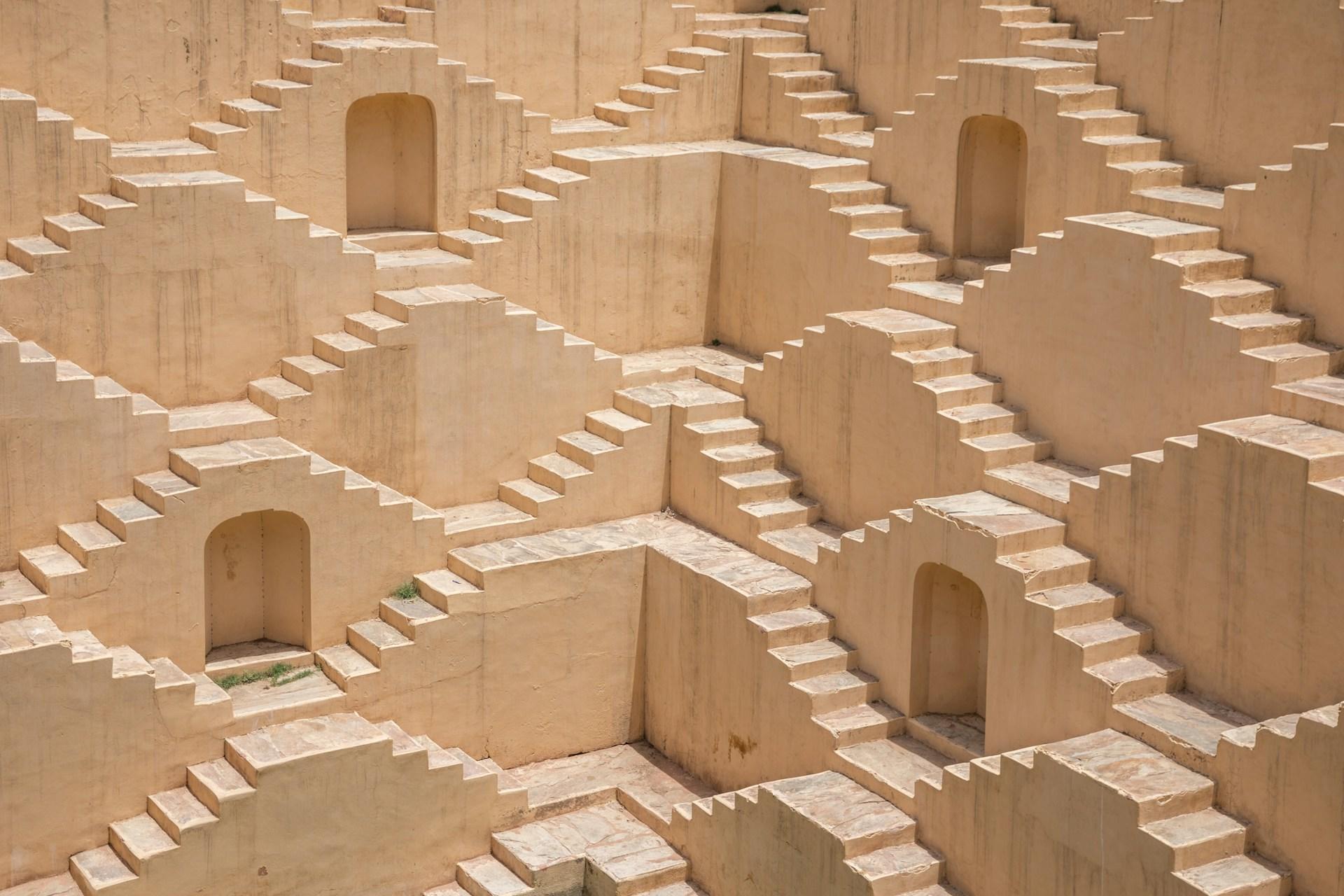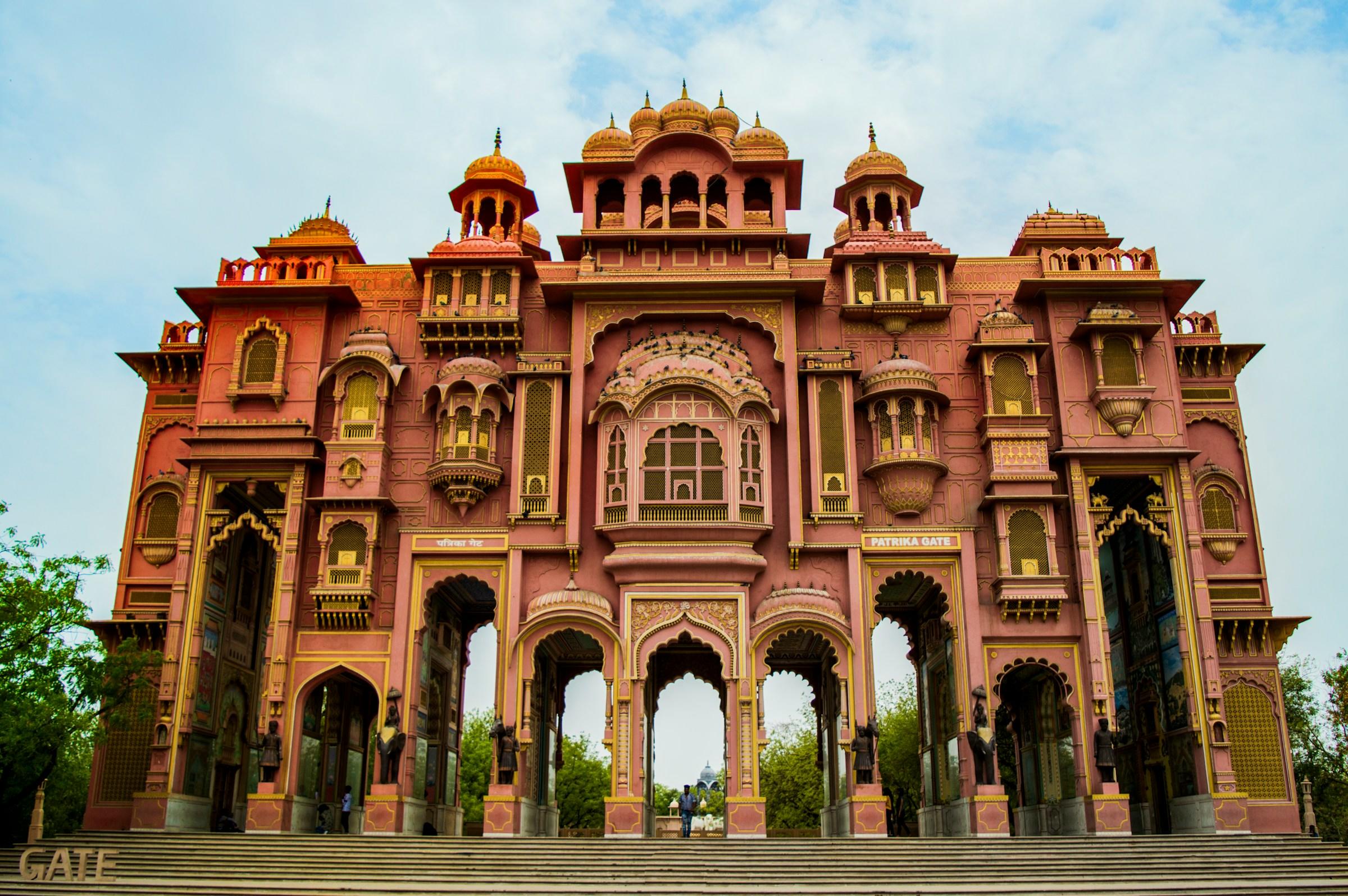Jaipur, The Pink City, is known for its warm hospitality, extravagant and elegant architecture, gorgeous local art and handicrafts, interesting and distinct clothing, and delicious Marwari cuisine.
The city was named after Maharaja Jai Singh II when it was founded by him in 1727. It was one of the first planned cities in India, meaning its expansion was arranged rather than organic like many other cities that started as smaller villages and grew larger over time (which can lead to infrastructure and traffic problems).
In 1876, Prince Albert Edward, son of Queen Victoia, visited the city. In anticipation, Maharaja Sawai Ram Singh I painted just about the entire city pink, which was a symbol of great hospitality. It is said that Prince Albert nicknamed Jaipur “The Pink City” upon arriving and marvelling at the outstanding efforts of the Maharaja. The following year, the Queen of Jaipur convinced her husband the Maharaja to make a law that states that all buildings must be painted pink so that even new constructions would match the 1876 remodel.
The state of Rajasthan was created in 1949, and the city was declared the capital. Today, it’s home to more than 3 million (30 lakh) people and in 2019 it was added to the list of World Heritage Cities by UNESCO.
The city’s rich history and vibrant people have resulted in a collection of Jaipur tourist places that draw in millions of visitors, both domestic and foreign, each year.
Here are the sights and experiences you simply must see in Jaipur!

The Best Places to Visit in Jaipur
Jaipur is only one city, but that doesn’t mean it’s lacking in things to do and places to go!
Even the accommodations themselves are worth taking a trip for. For example, The Raj Palace (built in 1727) has been voted “Best Heritage Hotel of India" by the Government of India and "The Leading Heritage Hotel of the World" consecutively for seven years by the World Travel Awards. Each meticulously renovated suite has its private museum exhibit.
And this is why it costs over ₹3,000,000 (30 lahks) for a single night for a single person in the Presidential Suite and is also why we can’t recommend this as a place to visit, since it’s simply much too expensive for most people. However, it gives you a taste of what kind of opulence you can expect from the rest of the city!
Hawa Mahal
Top of the list in any Jaipur sightseeing recommendations, the Hawa Mahal (aka Wind Palace) is one of the most iconic buildings in the world.
Built in 1799 by Maharaja Sawai Pratap Singh (Maharaja Jai Singh II’s grandson) and inspired by the Khetri Mahal, this exquisite example of Hindu Rajput architecture features a beehive-like facade made of 953 small windows (jharokhas) and intricate latticework overlooking the city street.
Hawa Mahal, also known as the "Palace of Winds," is a famous palace located in Jaipur, India. It was built in 1799 by Maharaja Sawai Pratap Singh
The reason for the busy exterior is so that the women in the royal palace could observe the goings-on in the city without being noticed by outsiders, as per purdah rule which was practiced by Hindu elites at the time.
The pink and red sandstone exterior was made more pronounced in the 1876 city-wide pink-washing!

Jantar Mantar
Built-in 1734 by the enterprising Maharaja Jai Singh II, the Jantar Mantar (literally “Calculating Instrument”) is an 18,700 square meter outdoor observatory filled with a collection of 19 stone astronomical instruments used for astronomy and cosmology according to the contemporary knowledge of such things.
*The construction of the site began in 1724.
Jai Singh noticed that the astrological tables (Zij) he was reading, which had been made many years prior, did not accurately predict the astronomical positions he was observing in the present. His conclusion was that the instruments that had been used to make the tables were not entirely accurate and thus threw off the data. So, he made new instruments!
According to UNESCO, the Jantar Mantar is “the most significant, most comprehensive, and the best preserved of India's historic observatories.” The complex is also home to the world’s largest stone sundial, Vrihat Smarat Yantra.
In 2010, UNESCO declared the monument to be a World Heritage Site.
The Jantar Mantar observatory in Jaipur is the most important and well-maintained collection of permanent monumental instruments constructed in India during the early 18th century. Some of these instruments are the largest of their kind ever built.
The City Palace
Construction on the City Palace began in 1727, shortly after construction on Jaipur began. Jai Singh moved his place of residence and operations from the Amber Fort to the City Palace so he could be closer to the action while the city was being built, and then governed.
He had it constructed according to the rules of Vashushastra and combined elements from Mughal and Rajput architecture to create a stunning display of the beauty of intricate detail.
Today, the City Palace is home to the Jaipur royal family, and it’s also the site of a few galleries, restaurants, the Maharaja Sawai Man Singh II Museum, and the offices for the museum’s trust.

Within the City Palace’s compound of courtyards and annexes, you can find
- Govind Dev Ji temple
- The Sabha Niwas (Diwan-e-Aam) Public Audience Hall
- Sarvato Bhadra (Diwan-e-Khas) Private Audience Hall
- Pritam Niwas Chowk
- Chandra Mahal building with Sukh Niwas, Shobha Niwas, and Chhavi Niwas
- Mubarak Mahal
Situated in the heart of the fortified city, the City Palace Complex was designed and constructed by Maharaja Sawai Jai Singh II, the creator of Jaipur. Combining Mughal and Rajput architectural styles, the palace continues to serve as the residence for the remaining ruling royal family, residing in a secluded area of the palace.
Chandpole Bazar
This traditional open market is located within the walls of the west side of Jaipur, near Chandpole Gate. Likely founded in 1727 as part of the city planning, Chandpole Bazar is arguably the most famous market in Jaipur today.
Running along many streets and side streets, you can find just about anything in the marketplace from marble, wood, and stone statues, handloom and handmade items, bangles and other jewellery, saree and other traditional clothing, juti and mojari, carpets, antiques, paintings and art, food like dried grains and other pantry items, fresh fruits and vegetables, street food, sweets and namkeen.
Chandpole Bazar is about 1 km in length, featuring about 350 stalls selling a wide variety of fares like statues, antiques and artefacts, clothing and shoes, jewellery, and spices.
Chandpole Bazaar is a popular shopping destination in Jaipur, known for its exquisite handicrafts and marble crafts that attract visitors from around the globe to this area of the city.
Note: The Bazaar Is closed on Sunday's and Tuesday's!
Amber Fort (Amer Fort)
Although the fort is located just outside the city (about 11 km away), it is one of the biggest draws for tourists. Located high on the hills overlooking Maota Lake and present-day Jaipur, the fort was first constructed by Raja Man Singh in 1529 and later expanded by Raja Jai Singh I in the early 17th century.
It was the home and Palace of Jai Singh II until he moved operations to the City Palace.
What Makes Amer Fort Famous?
Amer Fort is renowned for its artistic design elements. The fort features expansive ramparts, a series of gates, and cobbled paths, offering a commanding view of Maota Lake, the primary water source for the Amer Palace. Additionally, the Amer Palace serves as an excellent representation of Rajput architecture.
Today, there is a daily evening 50-minute light show that is quite the spectacle to see and a great way to finish off a day spent exploring the Fort!
The architecture is a notable mix of Hindu and Muslim styles of the time and the compound is made of six sections, so it’s almost like an entire village!
The entry fee for Indian adults is INR 25, while Indian students can enter for INR 10. Foreign adults have to pay INR 550, and foreign students have to pay INR 100. Additionally, the fee for the light and sound show is INR 100 for Hindi and INR 200 for English.

Within the compound, you can find many different types of structures, courtyards, pavilions, and rooms, such as:
- Diwan-i-Aam
- Sheesh Mahal
- Sukh Mahal / Sukh Niwas
- Shila Devi temple
- Ganesh Pol
- Suraj Pol
- Chand pol
- Jaleb Chowk
⚠️ Note: It’s important to note that there are mischievous monkeys nearby who tend to steal bags and purses, so either avoid carrying one or keep it secured to your body well!
Amber Fort was declared a UNESCO site in 2013 along with a few other nearby forts.
When To Travel to Jaipur
The best time to visit Jaipur is from the end of October to March since the summers are simply too hot to have an enjoyable experience. However, you can also visit during the monsoon season between July and September, when the temperature is subdued by the rain. Plus, all the dust gets washed away, bringing out the vibrant pink colour of the city!
Tourist Season
In 2019, Jaipur had its most tourist-heavy year yet with about 52.22 million (5 crore 22 lakh) domestic tourists and 1.6 million (16 lakh) foreigners. Of course, tourism was heavily impacted in 2020-2022, but in 2023 the number of tourists to Rajasthan increased to substantial levels. While it’s not clear how many tourists went to Jaipur specifically, Rajasthan saw 179 million (17.9 crore) domestic and 1.7 million (16.9 lakh) foreign tourists in 2023.
As things continue to progress, tourism will undoubtedly increase even more, which is great for Jaipur and Rajasthan’s economy, but might be irksome for tourists (and locals) who find themselves inundated with packed streets and sights.
Tourist season in Jaipur is typically between November and March since most people want to go when it’s cool and not rainy.
If you’re not perturbed by rain, you may find that visiting during the rainy season may be better in terms of crowds. You’ll just need to remember your umbrella and make peace with taking photos with a watery backdrop!
Best Festivals to Attend in Jaipur
The festivals of Dusshera, Gangaur, Teej, and Makar Sankranti are held at the City Palace, making them extra special holidays to celebrate in Jaipur!
In January/February, you can also attend the Jaipur Literature Festival and the Jaipur International Film Festival, both of which were established in 2009.
⚠️ Caution For Travellers: What To Know When Visiting Jaipur
Jaipur is the capital city of Rajasthan and is located about 268 km South of New Delhi. It’s a semi-arid area, so expect summers and even the winters to be quite dry and dusty. Make sure you have a water bottle with you so you can hydrate on clean water all day long!
There Will Be Mosquitoes
While the rainy season is more temperate, it also comes with one caveat: mosquitoes. If you’re traveling during the monsoon months, be sure to wear clothing that covers your arms, legs, and ankles, and closed shoes (especially at dawn and dusk) to cut down on bug bites. Wash your body with citronella soap and apply insect repellent before you venture out.
There are way fewer of these biting bugs during the other months of the year, but there will always be mosquitoes somewhere, just waiting for their chance to strike.
The Other Pesky Problem
Unfortunately, any time you are in any crowded area throughout the world, you must keep a close eye on your belongings or you may fall victim to a pickpocket. Be sure to keep your bag securely on your body and always within your sight. Do not keep your phone, wallet, or valuables in your pockets.
Jaipur is one of the most visited cities in the world, and for good reason! Don’t miss out on visiting the Pink City at some point in your travels!















